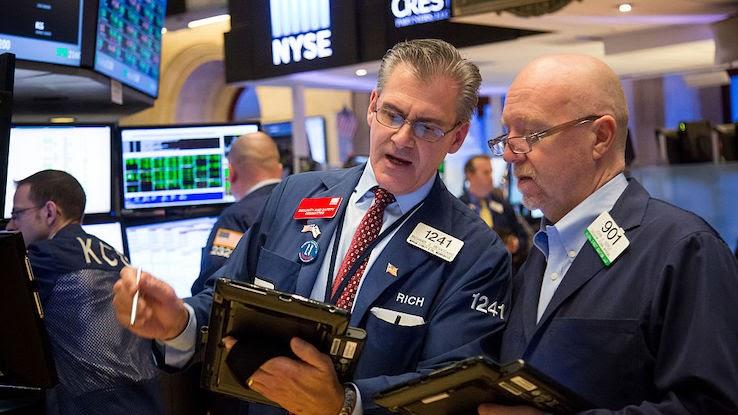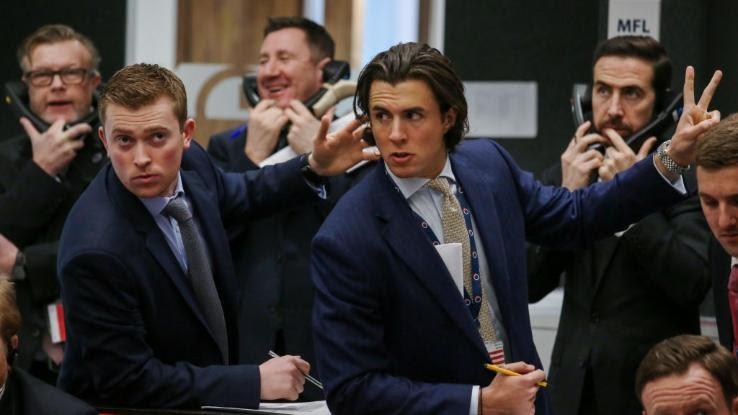Starting Things Again With Ex Chances of Staying Together

When a company does well enough to distribute some of its profits to its stock shareholders, this is known as paying dividends. Investing in stocks that pay out high dividends can be a great strategy for long-term investors, but dividend payments have a specific timeline they follow that includes important dates you'll want to pay attention to. These include what's known as the ex-dividend date. If you're looking into dividend stock investments, it helps to learn exactly what the various dates mean and how they'll affect your stocks throughout a dividend payment's "lifetime."
What Is an Ex-Dividend Date?
An ex-dividend date is one of several important elements of the dividend payment process that you should be familiar with as an investor. Not only does it determine who'll receive payments from an upcoming dividend, but it also tends to have an effect on the price of the stock in question throughout the course of the process.

To keep things simple, ex-dividend dates are the last date on which you can buy a stock in order to be considered eligible to receive a part of the upcoming dividend payment — sort of a cutoff date. But to better understand what this means, it helps to look at the entire payment process, including several other important dates. These include:
Declaration Date: This is the day when a company declares the details of an upcoming dividend payment. It usually includes the date that shareholders will be paid, how much they'll be paid and the date by which you must become a shareholder to get paid.
Record Date: The record date is the official cutoff date by which you must be a shareholder in order to receive a portion of the dividend payout. The important thing to keep in mind is that, depending on which market you trade on, it may take a day or more for an investment to actually go through. In other words, if you wait until the record date to buy stock, your buy may not go through until the next day, and you'll miss the cutoff for dividend payments. This is why the ex-dividend date exists.
Ex-Dividend Date: The ex-dividend date is the date by which you need to buy a stock in order to make sure your investment goes through by the record date. It's often one business day before the record date. It gives the trade enough time to fully execute and to qualify you as a shareholder. If you buy a stock by its ex-dividend date, you'll receive a portion of its upcoming dividend payout. If you purchase the stock after the ex-dividend date, however, you'll miss out on that upcoming dividend date and will need to wait until the next payment date.
Payment Date: This is the day when the payments of dividends are disbursed to investors.
What Does the Dividend Payout Process Look Like?
To illustrate how the entire process works, let's take a look at a real-world example. Argo Group International (ARGO) announced its quarterly dividend payment on the declaration date of February 16, 2021.

The declaration included the following information about the upcoming payout:
- Payout amount: $0.31 per share
- Ex-dividend date: 2/25/2021
- Record date: 2/26/2021
- Payment date: 3/12/2021
What does this mean to you as an investor? Say you already hold stock in ARGO. If that's the case, you'll want to hang onto your shares until after the record date if you want to take advantage of getting paid the upcoming dividends.
If you're not yet an investor but are interested in purchasing ARGO shares, then you'll need to become an official shareholder by February 26. Because your purchase of shares could take a day or more to fully execute, you'll want to make sure that you invest by February 25. You'll then receive a payout of $0.31 per share on the upcoming pay date of March 12.
The amount of money you receive from a dividend payment depends on how many shares you hold in the company. Say, for instance, that you bought 1,000 shares of ARGO by February 25. In that case, your dividend would be calculated as 1000 shares x $.31/share, which equals a $310 dividend payout.
The Effects of Declaration Dates on Stock Prices
Aside from knowing how much money you can expect to make from an upcoming dividend payout, you should also be aware of the effect that some of these dates can have on a company's stock price. This is primarily the case when it comes to the declaration date and the ex-dividend date.

A company's announcement date can reveal a great deal about how the company is doing, for better or worse. For example, imagine that you'd held stock in a company for five years. For each of those years, the company had paid out an annual dividend of $1.00 per share.
If the company suddenly announced one year that its upcoming dividends would only pay out $.25 a share, it'd be fair to assume that things hadn't been going so well. The reverse is also true. If, instead, the company announced that it'd be paying out dividends of $2.00 per share one year, then this would likely be an indication it was doing better financially than it had been.
Investors may look to a company's declaration as a sort of litmus test for the company's health. For this reason, many companies try to keep their dividends relatively consistent. If a company announces a lower-than-average dividend, it might cause investors to sell. If it announces a higher-than-average dividend, that'll likely attract more buys — which is ideal as long as the company can retain that higher rate going forward.
The Effects of the Ex-Dividend Date on Stock Prices
The ex-dividend date also tends to have an effect on a stock's price. In the days leading up to a company's ex-dividend date, the price of its stock will usually rise as more people try to get in on the upcoming dividend payout before it's too late.

Immediately after, however, the stock's price will generally drop. This is not only because the cutoff date has passed, but also because the company's value technically decreases due to the money that's about to be paid out in the dividend payments.
After a company's ex-dividend date, it goes through a period of time when its shares are for sale without the value of the upcoming dividend included. During this time, the stock is said to have "gone ex-dividend" and the letters "XD" may appear next to it to indicate this.
Due to these considerations, buying a stock right before the ex-dividend date isn't necessarily a smart move unless you're planning to hold onto it for the long haul. You'll likely pay a higher rate for shares that are only going to decrease in value once the stock goes ex-dividend, even if you do get a cut of the dividend profit. On the other hand, if you buy after the ex-dividend date, you'll usually be able to buy stocks at a lower price. Even though you won't be getting a share of the upcoming dividend, you'll still have the chance to receive a portion of the next one, assuming you don't sell.
Source: https://www.reference.com/business-finance/ex-dividend-date-stocks?utm_content=params%3Ao%3D740005%26ad%3DdirN%26qo%3DserpIndex
0 Response to "Starting Things Again With Ex Chances of Staying Together"
Enregistrer un commentaire